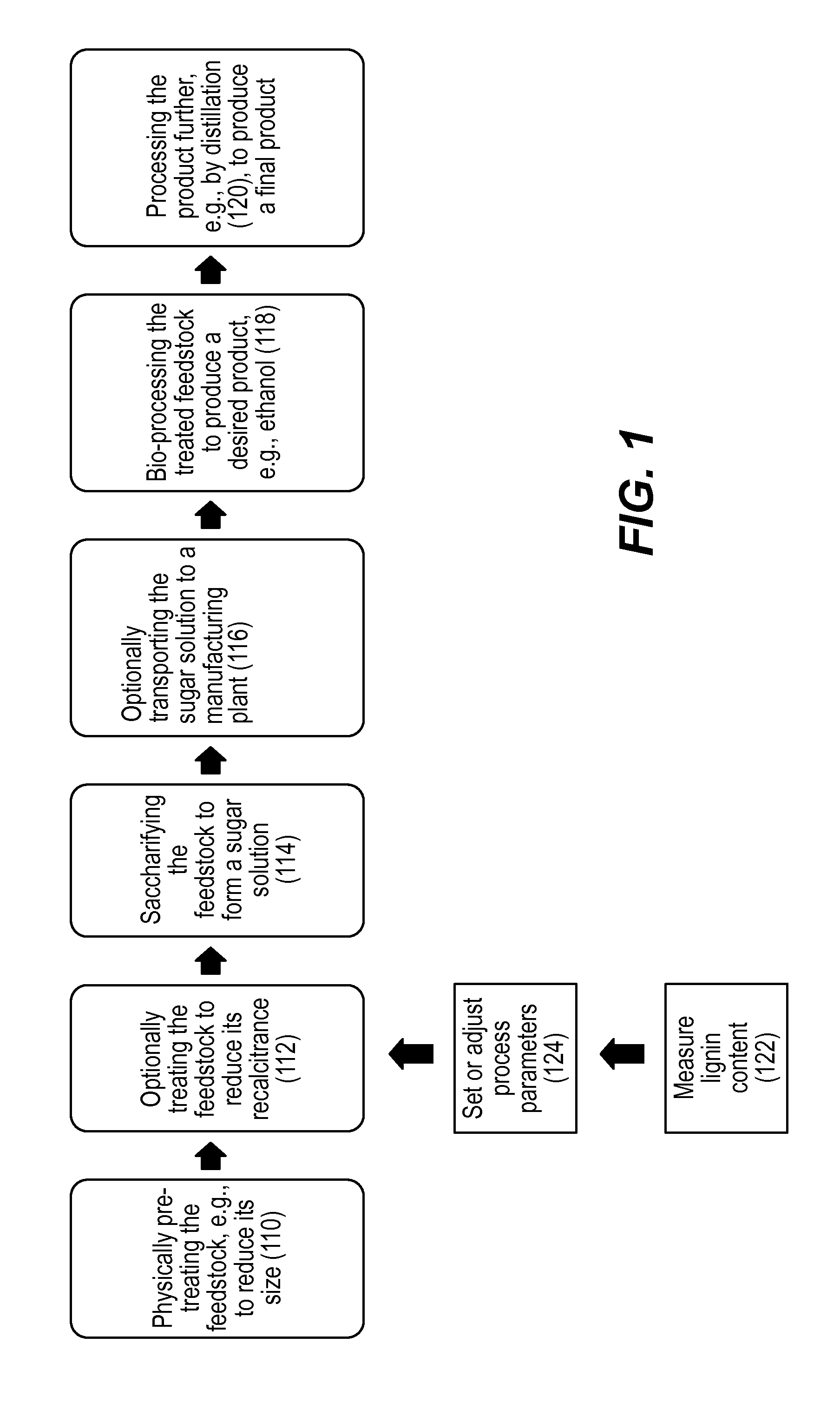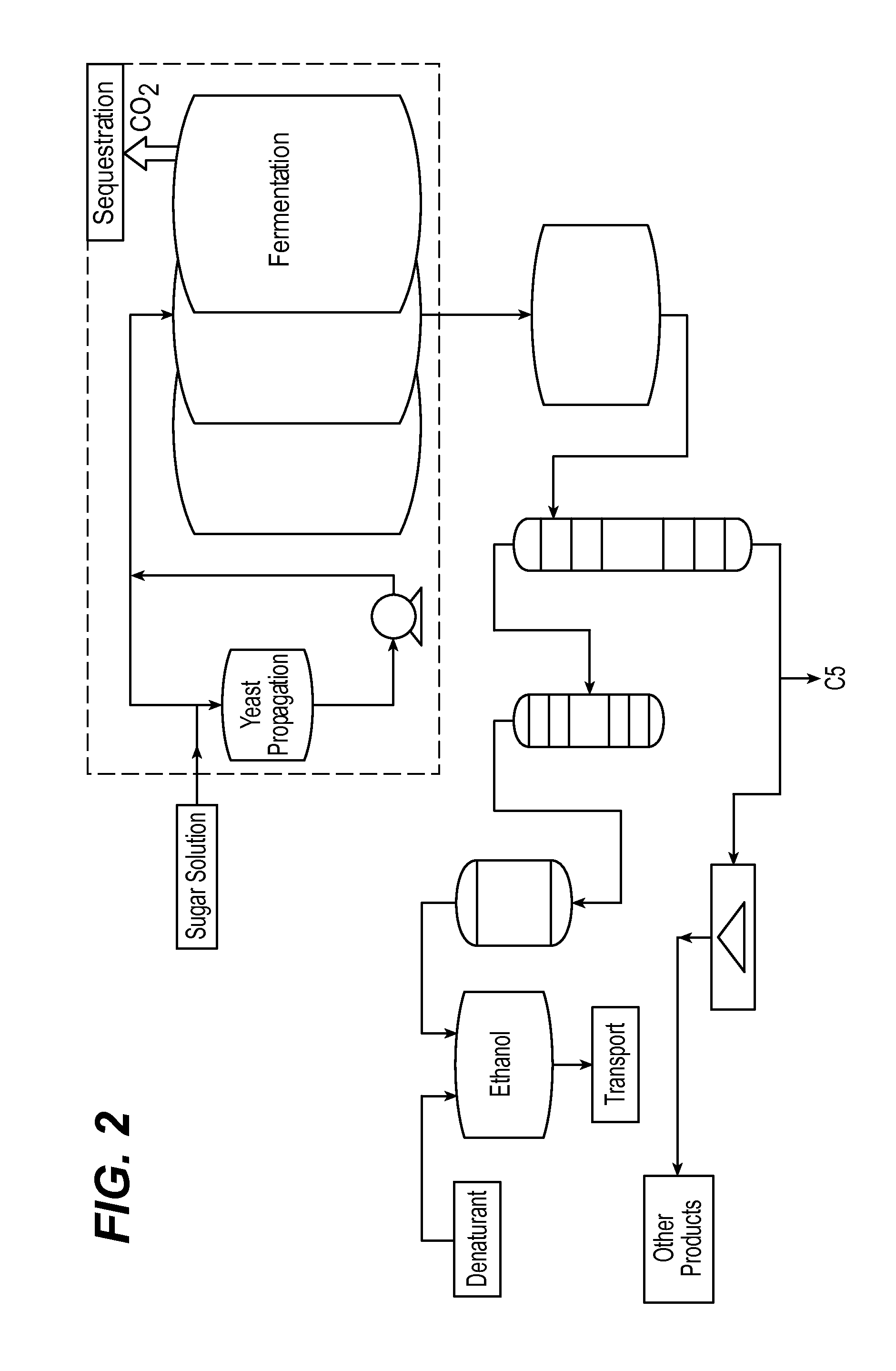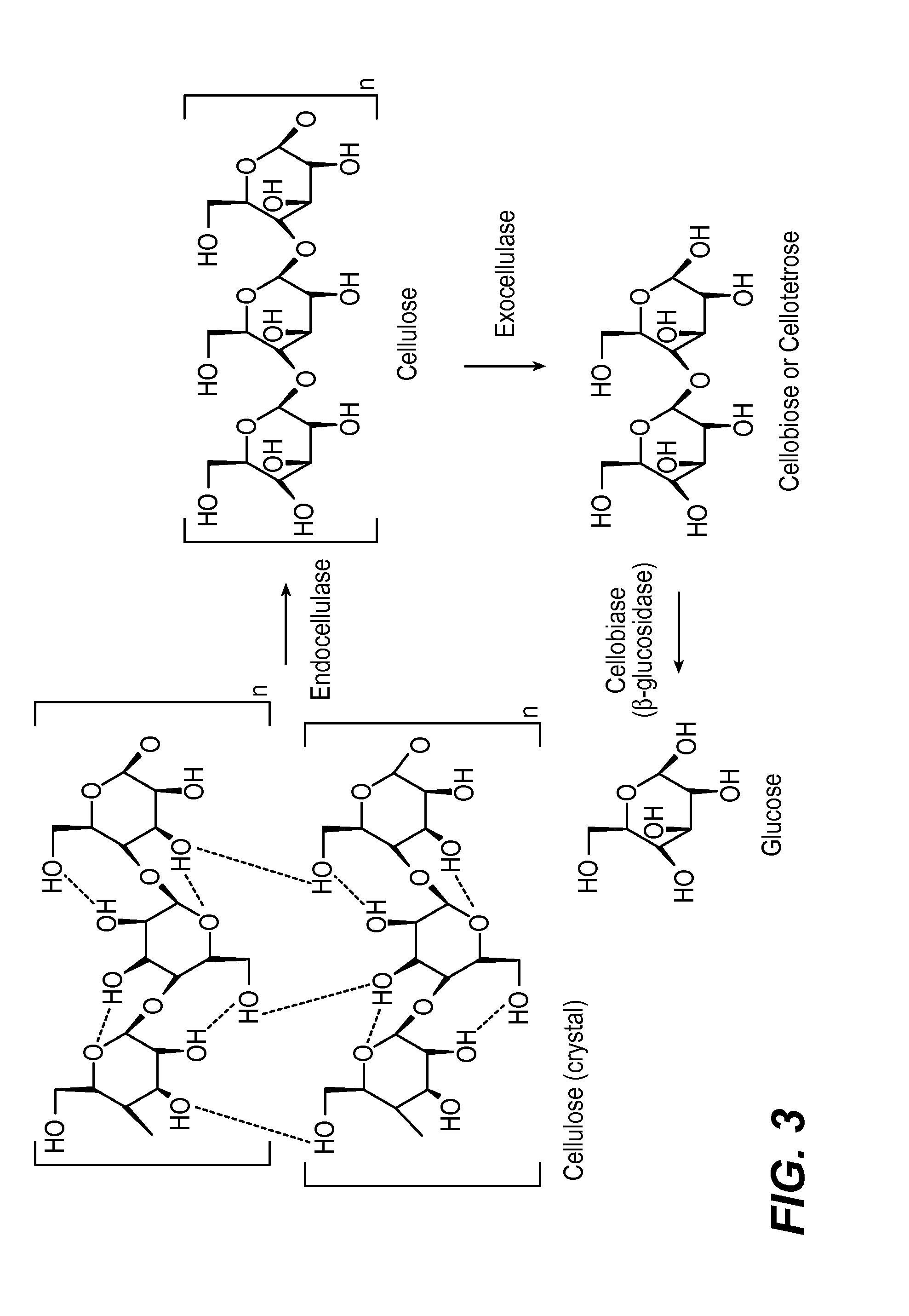Processing biomass
a technology of biomass and bioprocessing, which is applied in the direction of biofuels, waste based fuels, fermentation, etc., can solve the problems of affecting the economic viability of large-scale fermentation processes and difficult to obtain high concentrations of ethanol, and achieves significant improvement of bioprocessing efficiency, low cost, and cost reduction
- Summary
- Abstract
- Description
- Claims
- Application Information
AI Technical Summary
Benefits of technology
Problems solved by technology
Method used
Image
Examples
example 1
[0067]A feedstock (referred to in Example 2 as “XP”) was produced using the following procedure.
[0068]A 1500 pound skid of virgin bleached white Kraft board having a bulk density of 30 lb / ft3 was obtained from International Paper. The material was cut into pieces 8¼ inches by 11 inches using a guillotine cutter and fed to a Munson rotary knife cutter, Model SC30. The discharge screen had ⅛ inch openings. The gap between the rotary and fixed blades was set to approximately 0.020 inch. The rotary knife cutter sheared the cut pieces, releasing a fibrous material.
example 2
[0069]A medium was prepared by heating 4 L deionized water to 50° C. and mixing while adding 4% by volume weight rice bran meal, 3.405 g / L Urea, and 10 g / L Tween 80® surfactant. Next, three enzymes were added, in the following amounts:
ACCELLERASE ® enzyme0.25 mL / 1 gram XP feedstockSTARGEN ™ enzyme1% by bran weightFERMGEN ™ enzyme1% by bran weight
The ACCELLERASE was added at 0 hours, and the other two enzymes were added at 3 hours.
[0070]The XP feedstock was then added in increments, the amount and frequency of which was determined by consistency of the mixture and the mixing speed. The material was added over a 27 hour period, in increments of increments of 150-275 grams. The total amount added was 1096 grams.
[0071]Temperature fluctuations were monitored during mixing, to prevent heating over 55° C., which will tend to denature the enzymes.
[0072]Throughout the process, mixing was performed at 250 rpm, using an IKA ROTOTRON® mixer. The temperature was maintained at approximately 50° C...
PUM
| Property | Measurement | Unit |
|---|---|---|
| concentration | aaaaa | aaaaa |
| concentration | aaaaa | aaaaa |
| volume | aaaaa | aaaaa |
Abstract
Description
Claims
Application Information
 Login to View More
Login to View More - R&D
- Intellectual Property
- Life Sciences
- Materials
- Tech Scout
- Unparalleled Data Quality
- Higher Quality Content
- 60% Fewer Hallucinations
Browse by: Latest US Patents, China's latest patents, Technical Efficacy Thesaurus, Application Domain, Technology Topic, Popular Technical Reports.
© 2025 PatSnap. All rights reserved.Legal|Privacy policy|Modern Slavery Act Transparency Statement|Sitemap|About US| Contact US: help@patsnap.com



